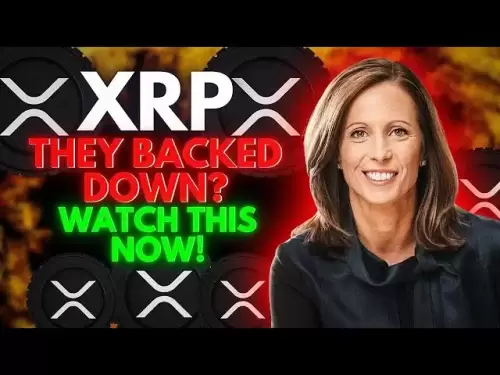-
 Bitcoin
Bitcoin $117500
2.15% -
 Ethereum
Ethereum $3911
6.19% -
 XRP
XRP $3.316
10.79% -
 Tether USDt
Tether USDt $1.000
0.01% -
 BNB
BNB $787.2
2.24% -
 Solana
Solana $175.2
4.15% -
 USDC
USDC $0.9999
0.00% -
 Dogecoin
Dogecoin $0.2225
8.40% -
 TRON
TRON $0.3383
0.28% -
 Cardano
Cardano $0.7868
6.02% -
 Stellar
Stellar $0.4382
9.34% -
 Hyperliquid
Hyperliquid $40.92
7.56% -
 Sui
Sui $3.764
7.63% -
 Chainlink
Chainlink $18.48
10.66% -
 Bitcoin Cash
Bitcoin Cash $582.1
1.88% -
 Hedera
Hedera $0.2601
6.30% -
 Avalanche
Avalanche $23.33
4.94% -
 Ethena USDe
Ethena USDe $1.001
0.02% -
 Litecoin
Litecoin $122.3
2.04% -
 UNUS SED LEO
UNUS SED LEO $8.969
-0.27% -
 Toncoin
Toncoin $3.339
0.86% -
 Shiba Inu
Shiba Inu $0.00001287
4.30% -
 Uniswap
Uniswap $10.43
7.38% -
 Polkadot
Polkadot $3.861
5.08% -
 Dai
Dai $1.000
0.02% -
 Bitget Token
Bitget Token $4.513
3.41% -
 Monero
Monero $267.7
-6.18% -
 Cronos
Cronos $0.1499
4.14% -
 Pepe
Pepe $0.00001110
5.15% -
 Aave
Aave $284.9
8.28%
How to open a DOGE contract transaction?
Trading Dogecoin contracts requires choosing a reputable exchange, verifying your account, depositing funds, understanding contract types (like perpetuals and futures), and managing risk with leverage and stop-loss orders to mitigate potential losses from DOGE's volatility.
Mar 14, 2025 at 12:06 am
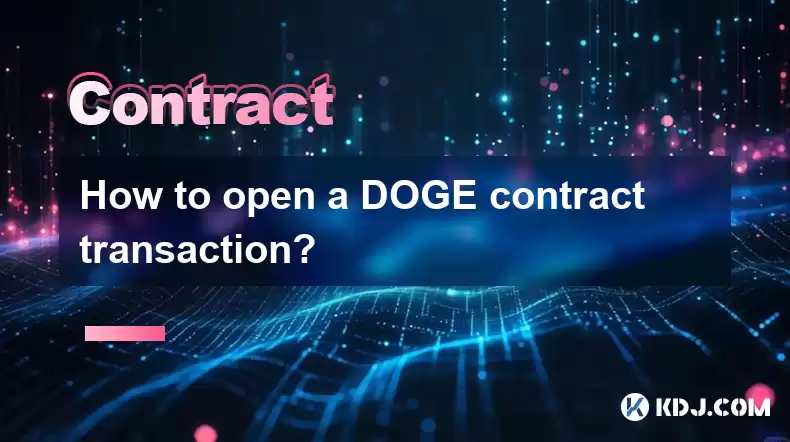
Key Points:
- Understanding Dogecoin (DOGE) and its volatility.
- Choosing a reputable cryptocurrency exchange offering DOGE contracts.
- Setting up an account and verifying your identity.
- Depositing funds into your exchange account.
- Understanding contract types (e.g., perpetual, futures).
- Placing your first DOGE contract trade.
- Managing risk through leverage and stop-loss orders.
- Monitoring your positions and understanding margin calls.
How to Open a DOGE Contract Transaction
Dogecoin (DOGE), while initially a meme-based cryptocurrency, has gained significant traction in the crypto market. However, its price volatility makes it a risky asset. Trading DOGE contracts amplifies this risk, offering the potential for significant gains but also substantial losses. Before venturing into DOGE contract trading, thorough research and understanding of the risks are crucial.
Choosing an Exchange:
Selecting a reliable cryptocurrency exchange is paramount. Look for exchanges with a robust reputation, strong security measures, and a user-friendly interface specifically supporting DOGE contracts. Consider factors like trading fees, liquidity, and available contract types. Research reviews and compare different platforms before making a decision. Ensure the exchange is regulated where applicable.
Account Setup and Verification:
Once you've chosen an exchange, you'll need to create an account. This usually involves providing your email address, password, and potentially other personal information. Most exchanges require identity verification (KYC) to comply with anti-money laundering (AML) regulations. This process might involve uploading a government-issued ID and proof of address. Follow the exchange's instructions carefully.
Depositing Funds:
After verifying your account, you need to deposit funds. Most exchanges support various deposit methods, including bank transfers, credit/debit cards, and other cryptocurrencies. Choose a method convenient for you, keeping in mind potential fees associated with each. Ensure you deposit enough funds to cover your intended trades and potential losses.
Understanding Contract Types:
DOGE contracts come in various forms, including perpetual contracts and futures contracts. Perpetual contracts have no expiry date, while futures contracts have a specific expiry date. Understanding the differences between these contract types is crucial for making informed trading decisions. Research each type to determine which best suits your trading strategy and risk tolerance.
Placing Your First Trade:
After depositing funds and selecting your contract type, you can place your first trade. The trading interface will vary depending on the exchange. You'll typically need to specify the contract size (amount of DOGE), the leverage (amount of borrowed funds), and the order type (market order, limit order, stop-loss order). Start with small trades to gain experience before committing larger amounts of capital.
Leverage and Risk Management:
Leverage magnifies both profits and losses. Using high leverage can lead to significant gains but also substantial losses if the market moves against you. Always use leverage cautiously and manage your risk using stop-loss orders. A stop-loss order automatically closes your position when the price reaches a predetermined level, limiting potential losses.
Monitoring Positions and Margin Calls:
Regularly monitor your open positions. Pay close attention to your account's margin level. A margin call occurs when your account's equity falls below the required margin level. This usually means you need to deposit more funds to maintain your position or risk liquidation (forced closure of your position). Always be prepared for margin calls.
Frequently Asked Questions:
Q: What are the risks of DOGE contract trading?
A: DOGE's price volatility significantly increases the risk of substantial losses. Leverage further amplifies this risk. You could lose more than your initial investment.
Q: How do I choose the right leverage?
A: Start with low leverage to gain experience and gradually increase it as your understanding and risk tolerance grow. Never use leverage beyond your comfort level.
Q: What is a stop-loss order, and why is it important?
A: A stop-loss order automatically closes your position when the price reaches a predetermined level, limiting potential losses. It's crucial for risk management.
Q: What happens if I receive a margin call?
A: A margin call means your account's equity is below the required level. You need to deposit more funds or risk having your position liquidated (closed).
Q: Are there any fees associated with DOGE contract trading?
A: Yes, exchanges typically charge trading fees, funding fees (for perpetual contracts), and potentially other fees. Check your exchange's fee schedule.
Q: Where can I learn more about DOGE contract trading?
A: Many online resources, including educational materials on exchanges and independent websites, provide information on cryptocurrency trading and risk management. However, always remember that past performance is not indicative of future results. Independent research is key.
Disclaimer:info@kdj.com
The information provided is not trading advice. kdj.com does not assume any responsibility for any investments made based on the information provided in this article. Cryptocurrencies are highly volatile and it is highly recommended that you invest with caution after thorough research!
If you believe that the content used on this website infringes your copyright, please contact us immediately (info@kdj.com) and we will delete it promptly.
- Ethereum, Staking Yields, and DeFi Exposure: A New Era for Investors?
- 2025-08-08 15:10:12
- Unilabs Pumps MIA, Binance Coin Bouncing Back, and Ethereum's Bearish Blues
- 2025-08-08 15:10:12
- Ethereum's Wyckoff Markup and Market Rotation: A New Era?
- 2025-08-08 15:30:12
- Ethereum, Vitalik Buterin, and the Overleveraged Game: A Balancing Act
- 2025-08-08 15:30:12
- Ethereum, Corporate Treasuries, and Vitalik Buterin: A New Era for ETH?
- 2025-08-08 15:36:08
- BNB Price, Binance Staking, and SEC Concerns: What's the Deal?
- 2025-08-08 15:36:08
Related knowledge

What is the distinction between mark price and last price on KuCoin?
Aug 08,2025 at 01:58pm
Understanding the Basics of Price in Cryptocurrency TradingIn cryptocurrency exchanges like KuCoin, two key price indicators frequently appear on trad...

What are the specific maker and taker fees on KuCoin Futures?
Aug 08,2025 at 08:28am
Understanding Maker and Taker Fees on KuCoin FuturesWhen trading on KuCoin Futures, users encounter two primary types of fees: maker fees and taker fe...
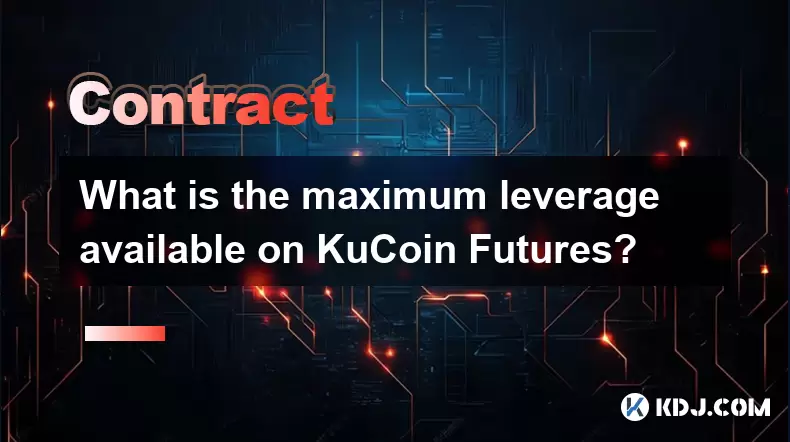
What is the maximum leverage available on KuCoin Futures?
Aug 08,2025 at 10:21am
Understanding Leverage in KuCoin Futures TradingLeverage in KuCoin Futures allows traders to control a larger position size using a smaller amount of ...

What is the minimum deposit for OKX contracts?
Aug 08,2025 at 07:00am
Understanding OKX Contract Trading BasicsOKX is one of the leading cryptocurrency derivatives exchanges, offering a wide range of perpetual and future...
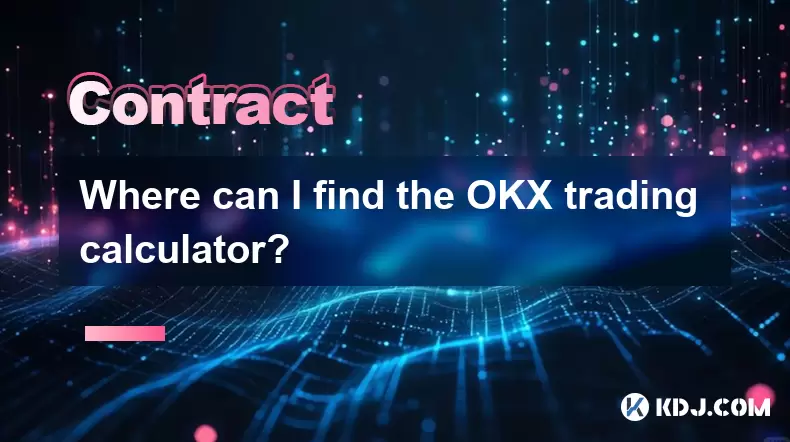
Where can I find the OKX trading calculator?
Aug 08,2025 at 07:49am
Understanding the OKX Trading Calculator FunctionalityThe OKX trading calculator is a powerful analytical tool designed to assist traders in estimatin...
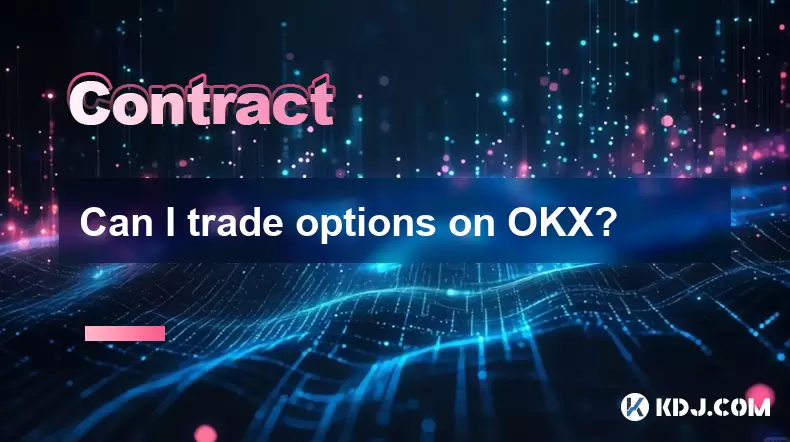
Can I trade options on OKX?
Aug 08,2025 at 11:01am
Understanding Options Trading on OKXYes, you can trade options on OKX. OKX is one of the leading cryptocurrency derivatives exchanges that offers a de...

What is the distinction between mark price and last price on KuCoin?
Aug 08,2025 at 01:58pm
Understanding the Basics of Price in Cryptocurrency TradingIn cryptocurrency exchanges like KuCoin, two key price indicators frequently appear on trad...

What are the specific maker and taker fees on KuCoin Futures?
Aug 08,2025 at 08:28am
Understanding Maker and Taker Fees on KuCoin FuturesWhen trading on KuCoin Futures, users encounter two primary types of fees: maker fees and taker fe...

What is the maximum leverage available on KuCoin Futures?
Aug 08,2025 at 10:21am
Understanding Leverage in KuCoin Futures TradingLeverage in KuCoin Futures allows traders to control a larger position size using a smaller amount of ...

What is the minimum deposit for OKX contracts?
Aug 08,2025 at 07:00am
Understanding OKX Contract Trading BasicsOKX is one of the leading cryptocurrency derivatives exchanges, offering a wide range of perpetual and future...

Where can I find the OKX trading calculator?
Aug 08,2025 at 07:49am
Understanding the OKX Trading Calculator FunctionalityThe OKX trading calculator is a powerful analytical tool designed to assist traders in estimatin...

Can I trade options on OKX?
Aug 08,2025 at 11:01am
Understanding Options Trading on OKXYes, you can trade options on OKX. OKX is one of the leading cryptocurrency derivatives exchanges that offers a de...
See all articles


























